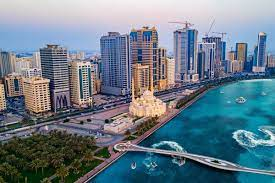Now Reading: How Climate Change Is Breaking the Global Water Cycle 2025
-
01
How Climate Change Is Breaking the Global Water Cycle 2025
How Climate Change Is Breaking the Global Water Cycle 2025

Table of Contents
Climate change is not just about hotter summers, rising sea levels, or melting ice caps. One of its most powerful effects is something we all depend on every day—the water cycle. This natural system, which controls how water moves through the environment, is being pushed out of balance by global warming. The consequences are serious, and they’re happening right now.
This article explores how climate change is altering the water cycle, what it means for communities across the world, and what actions are needed to prevent a full-blown water crisis.
What is the Water Cycle?

The water cycle, also known as the hydrological cycle, is the continuous movement of water on, above, and below the Earth’s surface. It includes processes such as:
- Evaporation (water turning into vapor)
- Condensation (vapor forming clouds)
- Precipitation (rain, snow, etc.)
- Infiltration and runoff (water soaking into the ground or flowing into rivers)
This cycle helps regulate climate, grow crops, supply drinking water, and support ecosystems. But rising global temperatures are now disturbing this delicate balance.
How Climate Change is Disrupting the Water Cycle
- Increased Evaporation Rates
As temperatures rise, more water evaporates from oceans, lakes, and soil. This can cause drier land and more intense droughts, especially in already dry areas. Evaporation also affects agriculture by drying out soil, making farming harder and less predictable.
- More Extreme Rainfall and Floods
A warmer atmosphere holds more moisture. This leads to heavier and more sudden rainfall events. While this might sound like a good thing, it often results in flooding, damage to infrastructure, and contaminated water supplies.
For example, countries like Germany, Pakistan, and India have recently faced devastating floods that displaced millions and caused billions in damages—all linked to changing rainfall patterns due to climate change.
- Melting Snow and Ice
In colder regions, glaciers and snowpacks act like natural water storage. They slowly release water during warmer months, feeding rivers and lakes. But with climate change, glaciers are melting too quickly, or not forming at all. This results in short-term flooding and long-term water shortages.
- Shifting Rainfall Patterns
Some areas are getting more rain than before, while others are receiving less. Regions like sub-Saharan Africa, parts of South America, and southern Europe are experiencing drier conditions, which threatens water supply, agriculture, and even political stability.
- Rising Sea Levels and Saltwater Intrusion
As sea levels rise, saltwater can move into freshwater sources like rivers and underground aquifers. This process, called saltwater intrusion, makes water undrinkable and harms agriculture in coastal areas.
Who Is Most Affected?
While climate change affects the whole planet, some communities suffer more than others. Developing countries often lack the resources to deal with floods, droughts, or water contamination. Rural farmers, indigenous people, and low-income families are often hit the hardest.
But even wealthier nations are not immune. In the United States, for example, the Colorado River—used by millions—is drying up. In Australia, long-term droughts have become more common. These examples show that no one is truly safe from the effects of a disturbed water cycle.
Climate Change and Water Scarcity
The United Nations estimates that by 2025, nearly two-thirds of the world’s population could face water stress. This means there won’t be enough clean water for everyone’s needs—drinking, cooking, farming, and sanitation.
Water stress can also lead to other problems such as:
- Conflicts between countries or communities
- Food shortages and higher prices
- Forced migration from areas hit by drought or floods
- Health risks due to poor water quality
What Can Be Done?

While the problem is global, solutions can start locally and personally. Here are some ways governments, communities, and individuals can help:
- Protect Natural Water Sources
Wetlands, forests, and rivers all help manage the water cycle naturally. Protecting these environments means more stable rainfall, better water quality, and less risk of disaster.
- Invest in Water-Saving Technologies
Smart irrigation systems, rainwater harvesting, and water recycling can reduce waste. Farmers, industries, and even households can make a difference by using water more efficiently.
- Cut Greenhouse Gas Emissions
At the root of the issue is global warming. Reducing the use of fossil fuels, switching to clean energy, and supporting climate-friendly policies are key steps to slowing down climate change.
- Improve Water Infrastructure
Upgrading old water pipes, building better drainage systems, and installing safe drinking water systems can help cities and towns manage both drought and flood conditions more effectively.
- Raise Awareness and Educate
The more people understand how climate change affects the water cycle, the more likely they are to support change. Schools, media, and local leaders can play a big role in spreading knowledge.
Final Thoughts
The water cycle is essential to life on Earth. Climate change is not only heating the planet—it’s drying out farms, flooding homes, and putting pressure on water supplies everywhere. The science is clear: if we do not act now, the problems will get worse, and millions will suffer.
But the good news is that we still have time. By working together across countries and communities, we can protect our water, adapt to change, and secure a better future for the next generation.
Let’s not wait for the taps to run dry before we take this seriously.
Read More:- Deyaar’s Latest Announcement Shakes Up the UAE Property Market






















